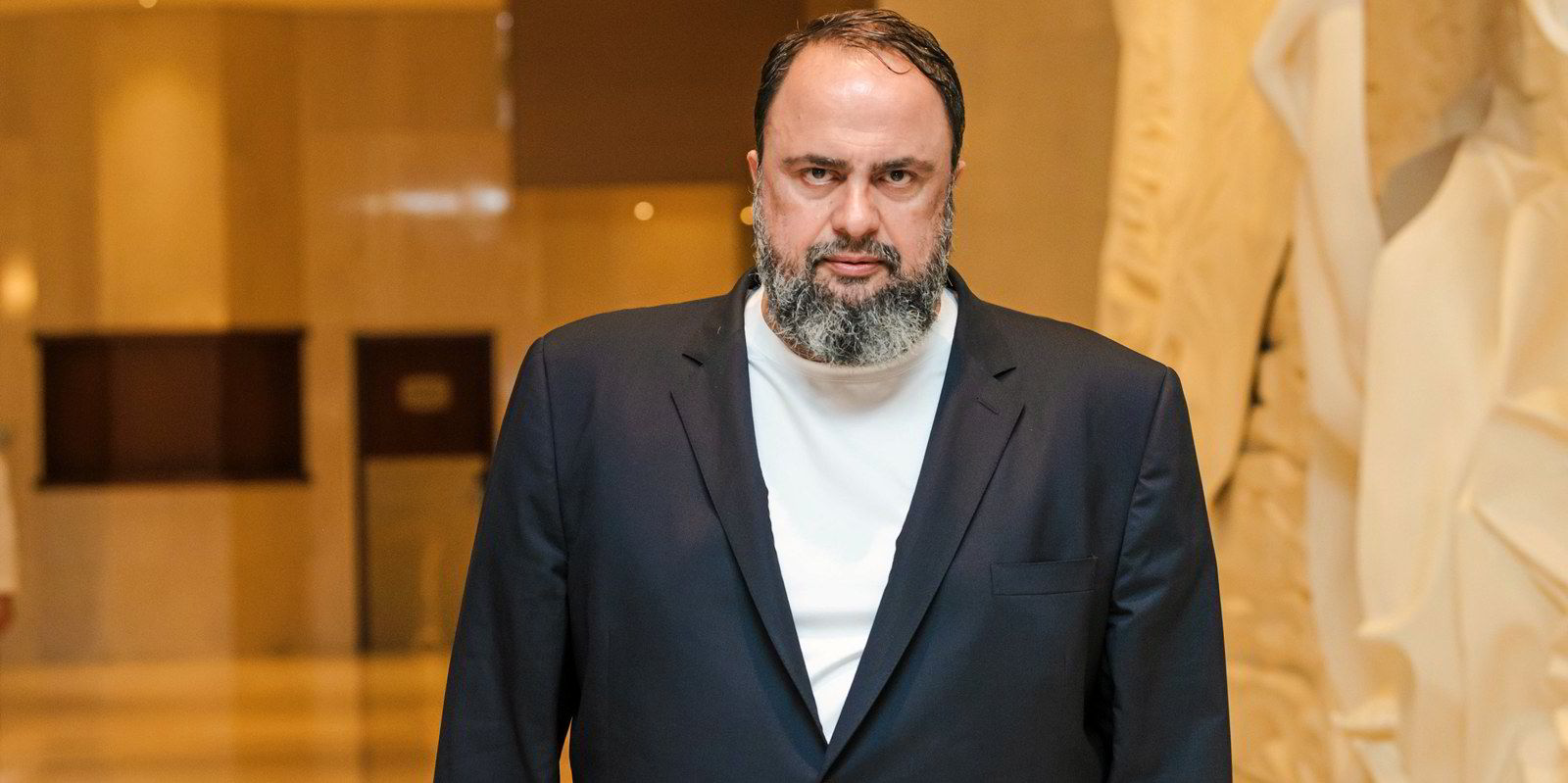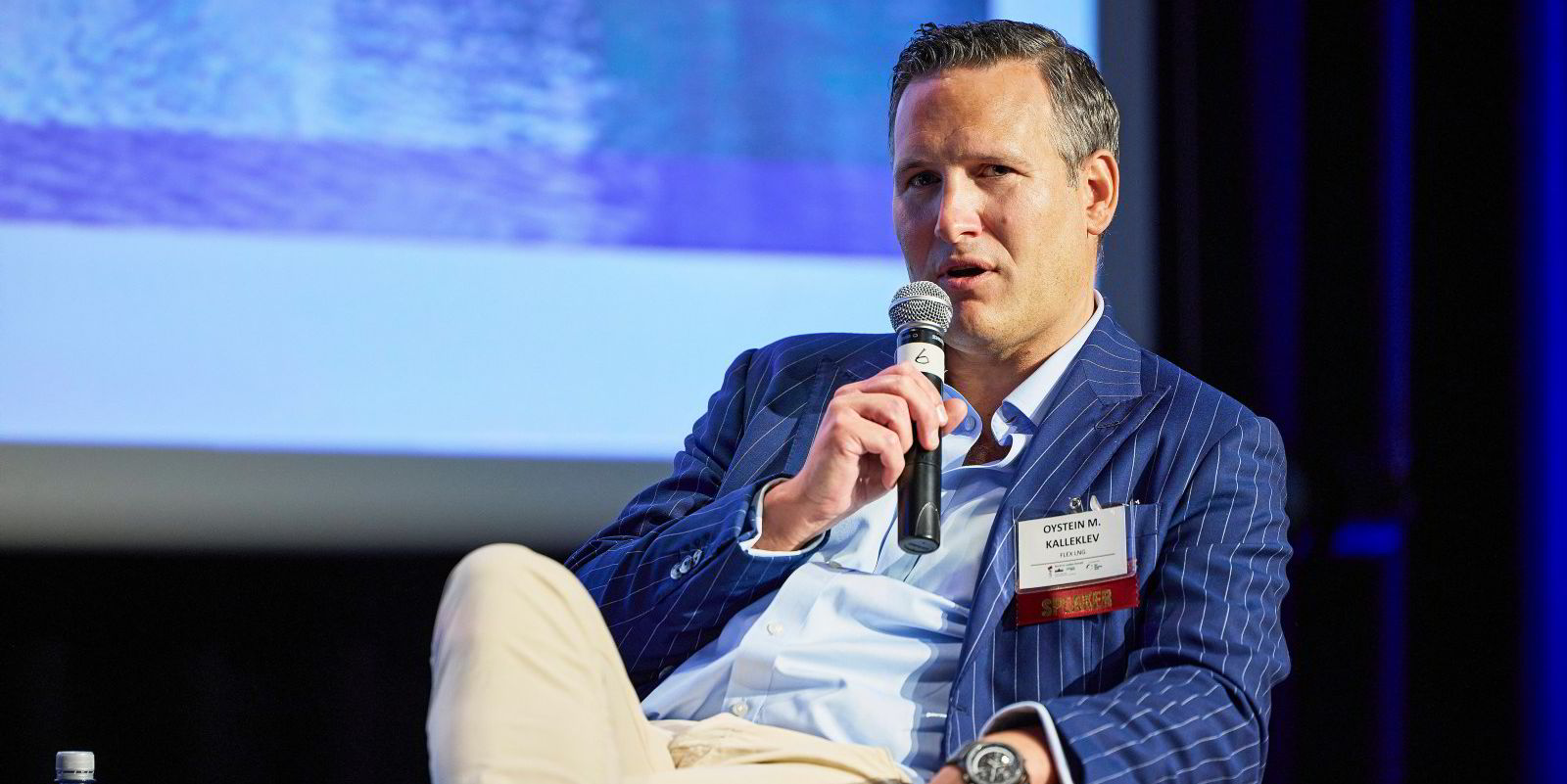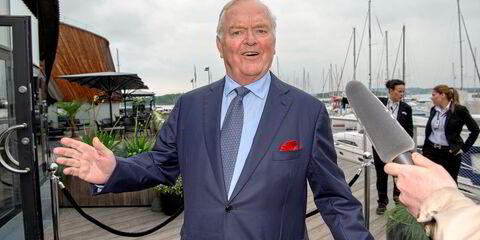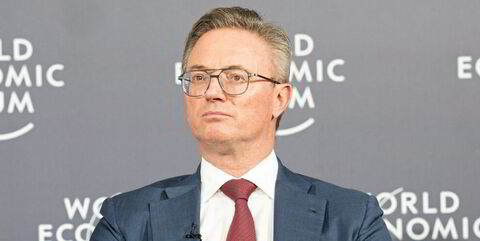Dorian LPG is planning to upgrade its VLGCs to ship ammonia as vessel owners in the sector invest to take advantage of expected growth in trade of the chemical.
But another shipowner is betting, literally, that midsize gas carriers are more likely to be the workhorses of the ammonia market.
Dorian LPG USA president John Lycouris told TradeWinds that the upgrades are expected to start this year and will take place as the VLGCs reach their scheduled dry-dockings.

The move comes against a backdrop of an energy transition in which Dorian, a VLGC specialist, sees its ships playing a role in carrying the cargoes in what Lycouris described as the coming “hydrogen age”.
He told Capital Link’s International Shipping Forum that the company’s gas carriers will benefit as LPG increasingly becomes a fuel, and they will play a role as ammonia becomes a low-emissions fuel of the future.
Ammonia has no carbon in its molecules, and when made from hydrogen that is produced from renewable electricity, it can be green all the way up the supply chain. Importantly, it is easier to ship than hydrogen.
“Ammonia, probably for the future, is a way to transport hydrogen,” Lycouris said. “It’s going to be an industrial feedstock. It’s going to be used for power generation and probably as a fuel substitute at some point in the future.”
Currently, most VLGCs are unable to carry a full load of ammonia without structural changes, because it is heavier than LPG, although some older ships were built with ammonia in mind.
Lycouris said Dorian will carry out upgrades to ships’ pumping, detection and monitoring systems, and it will install piping for water showers — a safety requirement.
But the New York-listed company has secured classification society approval to carry ammonia by filling tanks to just 86% to 87% of capacity.
That will keep the costs of the upgrade at just $2m per ship.
That is far lower than the price tag of a very large ammonia carrier newbuilding. Dorian confirmed last month it ordered its first VLAC. The 93,000-cbm vessel was reported to have cost KRW 163bn ($125m) at South Korea’s Hanwha Ocean.
Despite the ability to upgrade VLGCs to carry ammonia at lower cargo capacities, Capital Product Partners chief commercial officer Spyros Leoussis said purpose-built VLACs will likely be the future workhorse of the ammonia trade.
VLAC investment
“We see it as a market that’s definitely of interest to us, and it’s something that we’re looking into further investments going forward,” he said.

The New York-listed company’s largest shareholder, Evangelos Marinakis, has already started down that path.
TradeWinds reported in September that his Capital Maritime & Trading has teamed up with Idan Ofer’s Eastern Pacific Shipping to order four VLACs. Capital Maritime’s newbuildings are often dropped down to Capital Product.
But Oystein Kalleklev, chief executive of Avance Gas, is not convinced that larger ships are the way to go.
He noted that his company has been selling VLGCs that can carry ammonia. It offloaded two 2008-built vessels and, after ordering two newbuildings in 2021 for $78m and spending $2m apiece to upgrade them to carry ammonia, Avance sold them for $120m each, as TradeWinds reported in December.
“We are a bit more bullish on ammonia for the smaller sizes,” he said, noting the company’s investment in midsize gas carriers.
And he said Capital Maritime seems to agree, after its Capital Gas unit ordered midsize vessels at the same shipyard.
Kalleklev is so confident that he is willing to put his money where his mouth is.

“I just bet a steak dinner with [Dorian chief financial officer Ted Young] at a similar conference in Oslo last week that our MGCs are going carry ammonia before his VLGCs are going to do it,” he said.
Meanwhile, owners of smaller gas carriers are already experiencing growth in the ammonia trade.
Navigator Holdings executive vice president Randy Giveans told the Capital Link conference that his company, which owns small to midsize gas carriers, had two of its ships carrying ammonia in 2022 when Russia’s invasion of Ukraine disrupted trade in the commodity.
Now, 10 Navigator ships are carrying ammonia.
“Ammonia for us is a big part of our business today, and it will certainly be bigger three, four or five years from now,” he said.
With ammonia likely a future fuel for shipping, the company has approval-in-principal for the design of a vessel powered by the fuel and it has invested in Azane Fuel Solutions, which is working on ammonia bunkering.
Giveans said 95% of the ammonia being shipped today is grey ammonia, which is produced from natural gas.
“We’re also looking at investing in a blue ammonia project in the US,” he said, referring to ammonia that is produced with captured carbon to reduce its greenhouse gas footprint.
“We think that clean ammonia will certainly be a big driver of the ammonia growth.”






